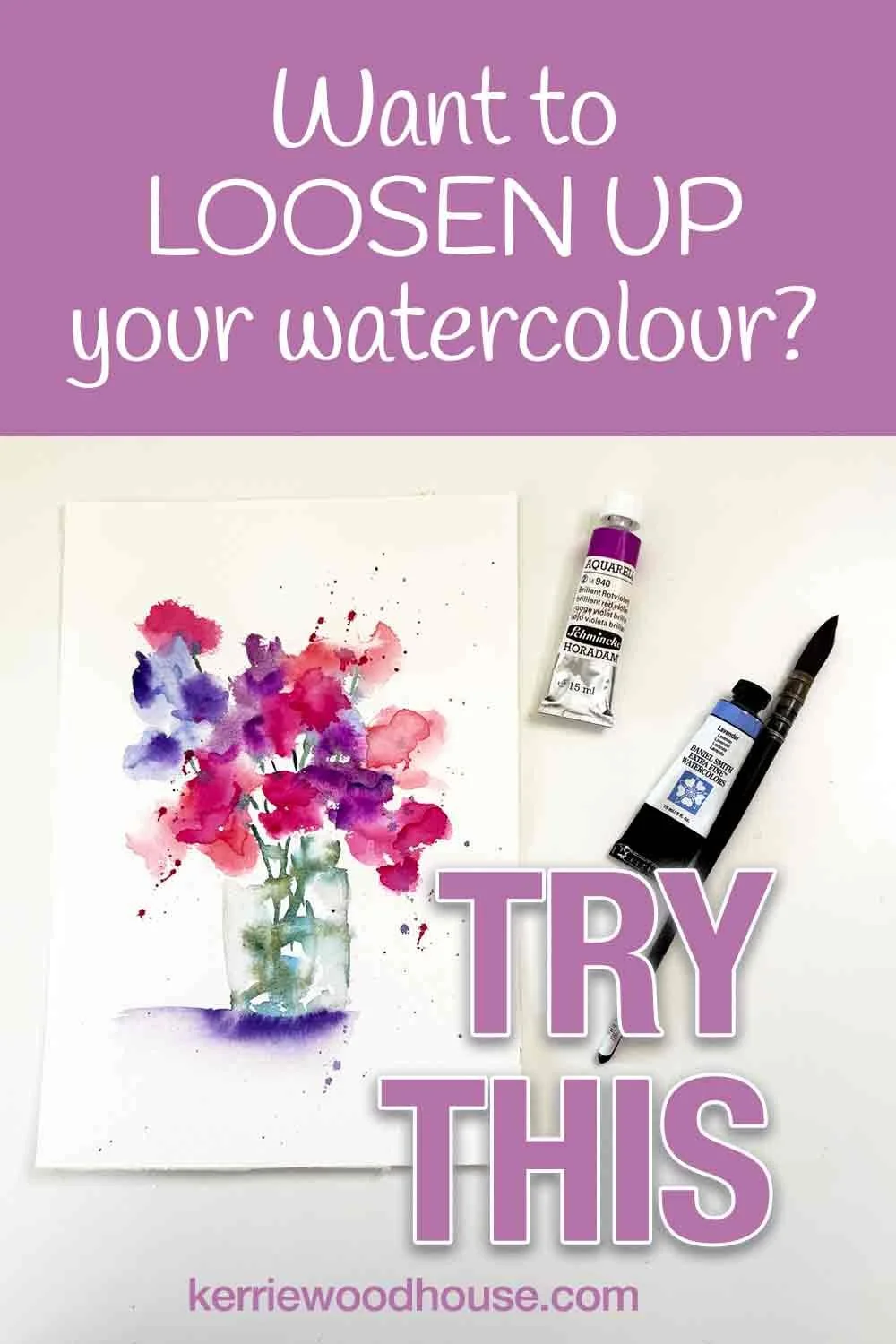How to Loosen Up Your Watercolour Painting: 3 Super Practical Tips
Disclosure: This post may contain affiliate links. That means if you buy something we may possibly get a small commission at no extra cost to you.
If you love that fresh, spontaneous look in watercolour but find yourself getting caught up in tight, controlled painting, you're not alone.
Today I'm sharing three super practical tips that you can try immediately to help you loosen up your painting and make the whole process much more enjoyable.
And if you were wishing there was a video version of this… there is! Scroll down and settle in with the popcorn 🍿
Tip 1: Embrace the Water (And Let It Do the Work)
My first suggestion is to use more water and let the water do a lot of the work for you. I always like to say it's the water that puts the magic in watercolour, but it can also be the thing that makes it a little more scary because it introduces an element of unpredictability.
But here's the thing - if you're after that fresh, spontaneous look, that unpredictability is exactly what you want. So don't be afraid of the water. Embrace it!
How I Like to Start
Once I've put down a very light pencil sketch (just a couple of lines to show me where the main elements will be), I start with clean water on my brush and splash in a little water here and there. I'm not carefully trying to place the water in any particular areas - I just randomly splatter in a bit of water as my first step.
This approach sets you up in the right frame of mind from the beginning.
When you put a paint mark down onto wet paper, that paint will spread out and the pigments will travel in the water. This is really something I love to watch - it's honestly why I paint, just to see that magic happen.
The Beauty of Natural Variation
What I particularly enjoy about this approach is that you get natural variation in your colors. Even using just one colour on your brush, you'll get different tones. The paint will be much paler where it makes contact with water, and you'll have crisp, bold marks where you put the mark on a dry section of paper.
This effect is so much more interesting when you don't really know where it's going to happen, because you can't always see where the water is on your page.
A Word of Caution
Remember that water makes our colours paler because it spreads out the pigments and lets more white paper show through. If you have a lot of water and not much pigment, you'll end up with a wishy-washy looking painting.
So remember to be bold with your color as well. You want lots of juicy color. It's really abundance all around - an abundance of water and an abundance of juicy color is the perfect recipe for a nice fresh, colourful, splashy painting.
I love how you get this combination of hard and soft edges: hard edges where you've put your mark on dry paper, and soft edges where the mark meets a damp section. Variety is such an important ingredient in our paintings.
Tip 2: Use Just One Large Brush for the Entire Painting
My second suggestion is to try doing your whole painting with one large brush. You really don't need a tiny brush at all.
I always find that those really tiny brushes suck you into the details and force you into making a much tighter painting than you ever wanted. If you go for a nice big soft round brush, you'll find it makes such a wide variety of marks.
Experiment with Your Brush
Do some experimenting to figure out just what you can do with that one brush:
When you push the whole belly into the page, you can make a big fat juicy mark that spreads out, giving you a nice random, organic shape
When you pull the brush onto its very tip, you can make very fine marks
You can get a whole spectrum of broad and very fine detailed marks just from that one brush.
The Mental Advantage
There's also a huge advantage to not worrying about whether you need to switch brushes at any point. If you have a whole selection of brushes in front of you, you've created a whole raft of extra decisions for yourself.
Decisions take up a lot of energy, and you want to save that energy for your painting. Stick to one brush and you'll be surprised what you can accomplish with it.
Using one brush for the entire painting is a wonderful way to simplify your painting process, and simplification is really key if you want to go for that loose, fun approach.
Tip 3: Don't Fuss—Put It Down and Leave It Alone
Here's my third tip for loosening up your painting: try not to fuss. Put your mark down and leave it alone. Wait and see what happens.
As the pigments move and settle, you might find that your image starts to come to life on the paper. As the pigments settle, I often notice little edges that look like they could be the edge of a petal or other natural forms.
When I do see these happy accidents, I might take the tip of my brush with the same color I was painting with and put in a little bit more of that edge to refine it slightly. Then I soften it off again using that same big soft round brush.
Less Is More
You'll be surprised how few details you need to just suggest the edge of a petal for the whole image to make sense. It's a much more enjoyable and freeing way to paint - responding to what you see developing on your page.
It feels so much more creative to be pulling your image out of what happens on the page rather than trying to make a complete reproduction of your reference. Just like we don't need to have exactly the same colours that we see, we really don't need to have the same petal edges in exactly the same places as they are in the reference or in real life.
The Key Is Simplification
All of these tips come back to one central theme: simplification. Whether it's simplifying your tools (one brush), your process (embracing the water's unpredictability), or your approach (not fussing with every mark), letting go of unnecessary complexity is what allows that fresh, spontaneous watercolour magic to happen.
We have been talking about simplifying the practical painting process itself. But the simplification can start much sooner - with the subject itself. Want to know more about that? There is a whole other blog post all about it!
Click here to read about how to take a complex reference photo and simplify it so that you have the best chance of creating a loose expressive painting from it.
Wish there was a Free Guide on Loosening Up Your Watercolour?
There is!
Click the button below to find my best tips on how to paint with more joy, freedom and expression.
Are you on your own painting journey?
One of these might be useful…










